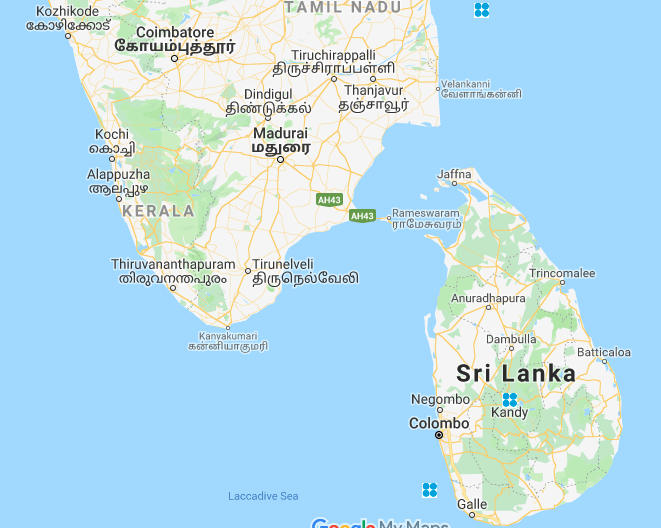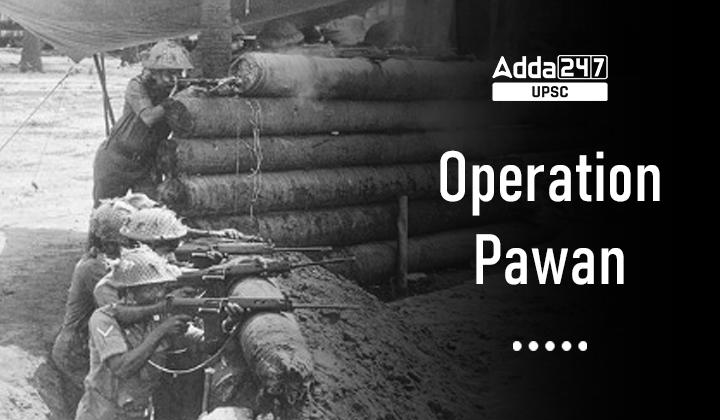Table of Contents
Relevance for UPSC
GS 2: Effect of Policies & Politics of Countries on India’s Interests, India and its Neighbourhood
Introduction
- In 1972, the Sinhalese changed the country’s name from Ceylon to Sri Lanka and made Buddhism the nation’s primary religion.
- As ethnic tension grew, in 1976, the LTTE was formed under the leadership of Velupillai Prabhakaran, and it began to campaign for a Tamil homeland in northern and eastern Sri Lanka, where most of the island’s Tamils reside.
- As the divide between the Sinhala majority and Tamils deepened In Lanka, the island nation gradually descended into civil war.
What was operation pavan?
- Sri Lanka’s location astride the main shipping routes of the Indian Ocean and its proximity to the Indian mainland has strategic significance for the security of India’s southern seaboard.
- Operation Pawan started with the induction of the IPKF on 30 July 1987.
- The de-induction started in August 1989 and by October 1989, the bulk of the IPKF had withdrawn.
- Operation Pawan terminated on 24 March 1990, when the final contingent of the IPKF sailed out of Trincomalee on board ships of the Eastern Fleet.
- When the last elements withdrew, there still had been no solution of the political problem that had necessitated the induction, nor indeed has a solution emerged till the date of publicationtoday.
- In round figures, over 1200 deaths and 3500 wounded was the price that the officers and men of India’s Peacekeeping Force paid to help a neighbour in distress.
- Though often criticised, Operation Pawan achieved the objectives that had been listed by India’s Prime Minister Rajiv Gandhi in his letter to Sri Lanka’s President Jayawardene when the Indo-Sri Lankan Accord was signed on 29 July 1987.
Demography of Sri Lanka during operation pavan
- At that time, Sri Lanka’s population of approximately 21 million, consisted of 75% Sinhalese, 18% Tamils (12% Sri Lankan Tamils and 6% Plantation Tamils) & 7% Tamil speaking Muslims.
- The Tamils were mainly located in the Northern and Eastern provinces except for the plantation Tamils who were concentrated in the highlands in the Central Provinces.
- The Northern Province consisted of 80% Tamil population, mainly concentrated around Jaffna City which was the Provincial Capital.
- Tamils constituted one-third of the population of Eastern Province along with one-third Sinhala & one-third Muslims (Moors).
What was the issue?
- The Tamils in Sri Lanka were being denied equal rights due to various historical reasons.
- The Tamils in Sri Lanka have support from the Tamil diaspora in India and across the world.
- As peaceful protests were not yielding any results, armed struggle was started, the leading rebel group was the Liberation of Tamil Tigers Eelam (LTTE), who were trained in India, and they further reached out to Palestinians to hone their fighting skills.
- The Indian Government in April 1987, decided to assist the Tamils of Sri Lanka by an armed intervention.
- However, by diplomatic negotiations an Indo Sri Lanka Peace Accord was signed on 29th of July 1987.
- LTTE was not happy with this peace accord as it compromised their aim of complete freedom in the Northern and Eastern provinces.

Five major lessons from Operation Pavan
The Indian intervention in Sri Lanka throws up five major lessons for future regional stability operations.
- Firstly, it is imperative to define the mission unambiguously and establish a clear mandate.
- Secondly, there is need for a robust military contingency planning process as well as discussions at various levels within the system to refine plans and provide an adequate force to meet possible eventualities.
- Thirdly, clear command and control needs to be established at the outset and the appropriate field formation must be designated as the headquarters.
- Fourthly, intelligence planning and coordination need to be made comprehensive, and adequate expertise and capabilities must be built up in advance.
- Finally, the importance of engaging in civil affairs tasks must be factored into the planning process, for which purpose the requisite data must be collated and plans formulated.



 TSPSC Group 1 Question Paper 2024, Downl...
TSPSC Group 1 Question Paper 2024, Downl...
 TSPSC Group 1 Answer key 2024 Out, Downl...
TSPSC Group 1 Answer key 2024 Out, Downl...
 UPSC Prelims 2024 Question Paper, Downlo...
UPSC Prelims 2024 Question Paper, Downlo...
